Health
What are the causes of pimples growing under the skin?

Last Updated on October 16, 2022 by Nurse Vicky
What are the causes of pimples growing under the skin?
Pimples can be frustrating, and if they’re growing underneath the skin, they can be quite embarrassing.
But don’t worry – there are treatments and remedies available that will help get rid of them.
In this blog post, we’ll discuss the different causes of pimples growing under the skin, as well as the different treatments you can use to get rid of them.
We’ll also cover the different types of pimples and what happens if you pop one, and provide tips on how to prevent blind pimples from happening in the future.
So keep reading for all the information you need to know about acne and its skin-related treatments!
Is there any cure for pimples that grow under the skin?
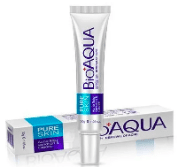
Acne vulgaris is a skin condition that affects the sebaceous glands and can result in the growth of pimples.
Acne vulgaris is classified into blackheads and whiteheads and can be caused by a variety of factors, such as genetics, skin type, oil production, and inflammation.
While there is no cure for acne that grows under the skin, there are treatments that can help to improve the condition.
Some common treatments include topical antibiotics, benzoyl peroxide, and topical corticosteroids.
How do you treat pimples that grow under the skin?
Pimples can be frustrating, but they’re not impossible to get rid of. The most common cause of pimples growing under the skin is sebum production.
Sebum is the oil that skin cells produce to keep your skin moisturized. When sebum production is excessive, it can lead to the formation of blackheads and pimples.
To treat pimples that grow under the skin, you will need to identify the cause and address it.
If sebum production is excessive, you will need to use a topical acne treatment that targets sebum production.
If blackhead or pimple pus is present, you will need to extract it with a pore cleanser and acne treatment.
Finally, if the pus is severe, you may need to see a dermatologist for further treatment. Thanks for reading!
What is a blind pimple?

Blind pimples are whiteheads that arise on the face and neck. They are small and pus-filled and can be quite frustrating to deal with because they’re difficult to see and often appear in clusters.
When should I see my healthcare provider about blind pimples?
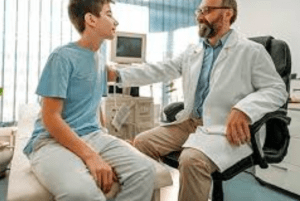
If you are experiencing a lot of whitehead pimples and feel that they might be related to your condition of blindness, it is best to see your healthcare provider.
While there isn’t enough evidence yet linking the two, it’s always better to get an expert’s opinion.
Who might get blind pimples?

There are various skin problems that can affect people of all ages and backgrounds, but one of the most common is acne.
Acne is a skin condition caused by an excess of sebum (oil) and dead cells on the surface of the skin.
It’s usually treated with topical lotion or antibiotics, but in some cases, it might require surgery or laser treatment.
How common are blind pimples?
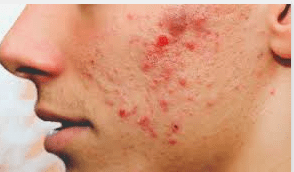
Blind pimples are a common skin condition that affects people of all ages. They tend to occur mostly on the face and neck, but can also be found on other parts of the body.
The skin around the pimple becomes red, inflamed, and bumpy due to the accumulation of pus in the follicle. The pus then seeps out through the hair follicle and fills up your pore again – causing inflammation and swelling.
What are the symptoms of blind pimples?
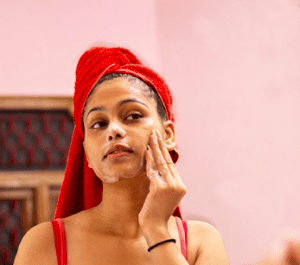
Blind pimples are skin cysts that generally form on the forehead, nose, cheeks, and chin. They are more common in people with oily skin and may also occur on the neck or chest.
Symptoms of blind pimples include pus discharge from the cyst, redness and swelling around it, itchiness, and a burning sensation when touched.
The pus might seep through the skin into underlying tissues or cause scars. Blind pimples can be difficult to diagnose and treat because they often go undetected for long periods of time.
How are blind pimples diagnosed?
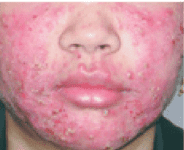
Blind pimples are a skin condition that primarily affects the face and neck. They may be red, white, black, or any color including skin tones.
The symptoms of blind pimples include acne-like nodules on the skin that often pusse and bleed easily.
The nodules may enlarge rapidly and form cysts or sebaceous follicles (located in oil glands). Blind pimples can also cause scarring if they’re not diagnosed and treated in time.
How can I prevent blind pimples?
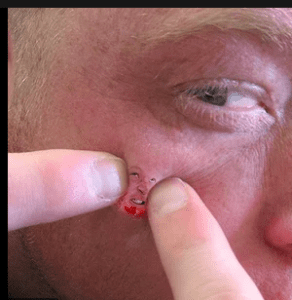
Blind pimples are a common skin condition that can be caused by several factors, including acne inflammation and sebum production.
In order to prevent them from happening in the first place, you need to control your acne inflammation and sebum production.
Here are some of the best ways to do just that: – Use topical acne treatments that address the root cause of your skin condition.
– Avoid products with benzoyl peroxide or salicylic acid as these could aggravate your skin condition further. – Follow a balanced diet that includes plenty of fruits and vegetables for antioxidant benefits.
Try avoiding processed foods, sugary drinks, and red meat as much as possible.
What can I expect if I have blind pimples?

If you’re one of the unlucky people with blind pimples, then your skin is in for an arduous and frustrating journey.
However, there are ways to make this experience a little bit easier.
Here are some tips that should help: –
Apply topical antibiotics regularly to clear up any acetogenic bacteria before it causes inflammation and further scarring Use benzoyl peroxide gel or solution as your main acne treatment option –
this will kill the acne cells while leaving the skin’s surface smooth and without blemishes. –
Avoid using harsh cleansers on your skin – they might cause irritation and redness, which only makes matters worse! Instead, opt for gentle foaming cleansers that won’t strip away protective oil layers from the skin.
How do you treat blind pimples?
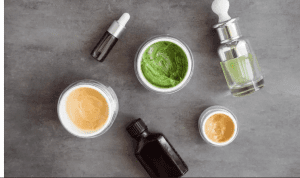
Acne can be a frustrating condition, and the causes are often unknown. However, pimples that develop under the skin can often be treated successfully with the help of a dermatologist.
Here are some of the most common causes of pimples growing under the skin:
1. Acne is usually caused by sebum and oil production, which can accumulate and block sebaceous glands.
2. Sebaceous glands secrete sebum, which is a natural oil that helps skin cells keep their oily surface.
3. When sebum accumulates and clogs the sebaceous glands, it triggers acne inflammation.
4. Various skin types can be affected by acne, and the skin surface may be oily or dry.
5. Pimples that develop under the skin are usually more severe and difficult to treat.
If you think you might have acne that’s growing under the skin, see a dermatologist for evaluation and treatment. Acne can be treated successfully
Types of pimples

Acne is a skin condition that causes blackheads and whiteheads to form.
It can be caused by many factors, but the most common ones are sebum production and hormonal changes.
Here are the three types of pimples that you’re likely to encounter: blackhead, whitehead, and cystic acne.
blackhead acne is the most common type and is caused by sebum and dead skin cells clogging the follicle.
whitehead acne is the result of inflammation of the follicle and is usually less severe than blackhead acne.
cystic acne, the rarest type, is characterized by pus and oil accumulation in the follicle and is usually the most severe type of acne.
What happens if you pop a blind pimple?
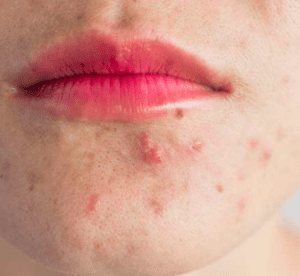
Pimples can be embarrassing and annoying, but they’re not always caused by bad skin care. In fact, many times they’re the result of skin inflammation or acne cyst.
If you pop a pimple, there’s a good chance that the pus and skin cells will spread the infection to other areas of the skin.
So, what happens if you pop a blind pimple? The pus and skin cells will seep into the surrounding tissues and cause an infection.
This is why it’s important to get acne cysts treated promptly – the earlier it’s diagnosed, the better the chances of successful treatment.
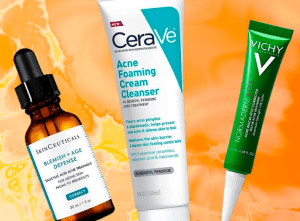
Pimples can be really frustrating, especially when they keep on coming back no matter how much you try to prevent them. Fortunately, there are some simple tips that you can follow to prevent blind pimples from growing and ruining your skin.
The first and most important step is to keep your skin clean and oil-free. This means that you should avoid using skin lotions and oils, and clean your skin with a gentle cleanser every day. Make sure that you apply sunscreen every day, and avoid going out in the sun if you can.
If you do get a pimple, the best way to treat it is to pus it and leave it to dry out. If it doesn’t go away within a few days, consult your dermatologist.
Frequently Asked Questions
What are the two most common causes of pimples growing under the skin?
The two most common causes of pimples growing under the skin are hormonal changes and inflammation. Pimples can be caused by a variety of factors, and understanding the causes is key to treating them effectively.
Here are the most common causes of pimples growing under the skin: 1. hormonal changes 2. skin inflammation 3. sebum production 4. skin irritation 5. skin sensitivity 6. skin infection 7. skin dehydration 8. skin oiliness 9. skin puberty 10. skin irritation from other skin care products
How can I prevent pimples from growing under my skin in the first place?
Pimples can happen for a lot of different reasons, but the best way to prevent them from growing is by following some basic acne prevention tips. acne sufferers should avoid sebum production, oiliness, and inflammation.
They should also use dermatologist-recommended topical acne treatments and avoid cosmetics with acne-causing ingredients.
Conclusion
If you’re looking for answers to your pimple-related questions, look no further! In this blog, we’ve outlined the different causes of pimples growing under the skin and provided treatments and advice on how to deal with them. So whether you’re looking for a cure or just want to know how to treat pimples effectively, you’ve come to the right place!
Health
Protein-Infused Diet Coke: The Viral ‘Dirty Soda’ Trend Taking TikTok by Storm

Protein-Infused Diet Coke: The Viral ‘Dirty Soda’ Trend Taking TikTok by Storm
The rise of quirky, unconventional food and drink trends is a staple of social media, but one concoction that’s recently captured TikTok’s imagination is “Protein Diet Coke,” fondly referred to as a “dirty soda.”
Combining the classic fizz of Diet Coke with creamy protein shakes, this bizarre yet fascinating combination has gained traction for its unique taste, nutritional benefits, and shareable aesthetic appeal.
But is it more than just a passing fad? Let’s dive into why this drink has taken the internet by storm, the health implications, and how you can make your own.
What Is Protein Diet Coke?
Protein Diet Coke is a mashup of two popular beverages: Diet Coke, known for its zero-calorie allure, and protein shakes, a go-to choice for fitness enthusiasts.
By blending these seemingly unrelated drinks, you get a fizzy, creamy concoction that surprises the palate and offers a protein-packed twist.
This beverage has become a TikTok sensation, with videos showcasing creative ways to personalize the drink by experimenting with flavors, toppings, and presentation.
How Did Protein Diet Coke Become a Trend?
The trend began with users sharing videos of themselves trying the drink and reacting to its surprising taste.
The hashtag #ProteinDietCoke amassed millions of views as influencers and everyday users alike showcased their custom recipes. Social media thrives on novelty, and the odd pairing of soda and protein shake fits the bill perfectly.
Moreover, this trend reflects a broader shift toward incorporating fun into fitness and healthy eating. As people explore unique ways to stay healthy, Protein Diet Coke offers a mix of indulgence and nutrition.
Health Benefits of Protein Diet Coke
1. Boosts Protein Intake:
Protein is essential for muscle repair, weight management, and overall body function. By mixing Diet Coke with a protein shake, you create a delicious way to meet your daily protein goals.
2. Low-Calorie Alternative:
For those watching their calorie intake, using Diet Coke and low-sugar protein shakes keeps the drink guilt-free while satisfying cravings for something sweet and fizzy.
3. A Fun Recovery Drink:
The combination of carbonation and protein makes this drink a potential post-workout recovery option. While traditional recovery drinks are effective, Protein Diet Coke brings a fun twist to replenishing nutrients.
Possible Drawbacks of Protein Diet Coke
While this beverage has many enthusiasts, it’s not without its critics.
1. Artificial Sweeteners:
Diet Coke contains artificial sweeteners like aspartame, which some people prefer to avoid due to potential health concerns.
2. Unusual Flavor:
Not everyone loves the combination of cola and creamy textures. For some, it’s an acquired taste.
3. Limited Nutritional Value from Soda:
Though protein shakes provide nutrients, the soda itself doesn’t offer significant health benefits. Consuming it in moderation is key.
How to Make Protein Diet Coke at Home
Ingredients:
- 1 can of Diet Coke (12 oz)
- 1 scoop or 8 oz of your favorite protein shake (vanilla or caramel flavors work best)
- Ice cubes
- Optional: toppings like whipped cream, syrups, or fruit
Instructions:
- Fill a glass with ice cubes.
- Pour the Diet Coke into the glass, leaving some space for the protein shake.
- Slowly add the protein shake to the Diet Coke. Stir gently to combine.
- Customize with toppings or syrups if desired.
- Enjoy immediately!
Why Do People Love It?
The allure of Protein Diet Coke lies in its unexpected combination and social media appeal.
The drink’s unique flavor profile intrigues people, while its aesthetic presentation makes it Instagram-worthy.
Additionally, it’s a fun way to consume protein without feeling like you’re drinking a traditional shake.
Creative Variations of Protein Diet Coke
1. Mocha Protein Soda:
Add a chocolate-flavored protein shake for a mocha-inspired treat.
2. Tropical Twist:
Use coconut-flavored protein powder and garnish with pineapple slices.
3. Spicy Cola Blend:
Mix in a dash of cinnamon or chili powder for a bold kick.
4. Vanilla Caramel Float:
Top with a dollop of whipped cream and caramel drizzle for an indulgent dessert-like drink.
Is Protein Diet Coke Here to Stay?
Trends often fade as quickly as they emerge, but Protein Diet Coke might have staying power due to its flexibility and nutritional appeal. As long as social media continues to celebrate creativity in the kitchen, this quirky beverage is likely to remain a go-to option for adventurous foodies.
Conclusion
Protein Diet Coke is more than just a viral sensation; it’s a testament to how creativity can turn everyday ingredients into something extraordinary.
While it may not replace traditional sources of protein or be everyone’s cup of tea (or soda), it has undeniably carved out a niche in the world of health-conscious indulgence.
Whether you’re in it for the taste, the health benefits, or the TikTok-worthy moments, this “dirty soda” trend is worth a try.
FAQs
1. Can I use regular Coke instead of Diet Coke?
Yes, but keep in mind that regular Coke has significantly more sugar and calories, which might defeat the purpose of a low-calorie drink.
2. What type of protein shake works best?
Vanilla and caramel protein shakes are popular choices because they complement the flavor of cola. However, feel free to experiment with other flavors.
3. Is Protein Diet Coke suitable for kids?
While it’s not inherently harmful, the caffeine content in Diet Coke might not be suitable for children. Opt for caffeine-free soda if making this for kids.
4. Can I make a vegan version?
Absolutely! Use plant-based protein shakes and ensure the soda is vegan-friendly.
5. How often can I drink Protein Diet Coke?
Like any treat, moderation is key. Consuming it occasionally as part of a balanced diet is perfectly fine.
References
Health
STI Epidemic: Decline in New Syphilis and Gonorrhea Cases in the US, CDC Reports
Health
Dave Coulier Opens Up About His Battle with Stage 3 Non-Hodgkin’s Lymphoma

Dave Coulier Opens Up About His Battle with Stage 3 Non-Hodgkin’s Lymphoma
A Beloved Star Faces a Serious Diagnosis
Dave Coulier, best known for his role as Joey Gladstone on the iconic sitcom Full House, has revealed a deeply personal health challenge.
The comedian and actor recently announced his diagnosis of Stage 3 Non-Hodgkin’s Lymphoma, sparking widespread concern and support from fans worldwide.
Coulier’s bravery in sharing his journey sheds light on this complex form of cancer, its symptoms, treatment options, and the importance of early detection.
What is Non-Hodgkin’s Lymphoma?
Understanding the Disease
Non-Hodgkin’s Lymphoma (NHL) is a type of cancer that originates in the lymphatic system, which is an integral part of the body’s immune defense.
This form of lymphoma is distinct from Hodgkin’s lymphoma due to differences in the cancerous cells’ appearance and behavior.
- Lymphatic System’s Role: It helps fight infections and regulates fluid balance in the body.
- Lymphoma’s Impact: NHL occurs when lymphocytes (a type of white blood cell) grow uncontrollably, leading to tumors.
Dave Coulier’s Journey: From Diagnosis to Awareness
The Diagnosis
Coulier disclosed that he had been feeling fatigued and unwell for several months before seeking medical advice.
A series of diagnostic tests, including a biopsy and imaging scans, confirmed the presence of Stage 3 Non-Hodgkin’s Lymphoma.
How He Shared the News
In a heartfelt video shared with his fans, Coulier discussed his diagnosis candidly. The star emphasized the importance of listening to one’s body and seeking medical help when something feels off.
“I’ve always tried to make people laugh, but now, I want to use my voice to educate and inspire,” he said.
Symptoms of Non-Hodgkin’s Lymphoma
Recognizing the symptoms early can make a significant difference in treatment outcomes.
Some common symptoms include:
- Swollen lymph nodes, often painless
- Persistent fatigue
- Unexplained weight loss
- Fever and night sweats
- Abdominal pain or swelling
- Chest pain, coughing, or trouble breathing
Why Early Detection Matters
Coulier’s journey highlights the importance of not ignoring persistent symptoms. Timely diagnosis can improve treatment effectiveness and overall prognosis.
Stages of Non-Hodgkin’s Lymphoma
NHL is categorized into four stages based on its spread:
- Stage 1: Cancer is localized to one lymph node region.
- Stage 2: Two or more lymph node regions on the same side of the diaphragm are affected.
- Stage 3: Cancer involves lymph nodes on both sides of the diaphragm.
- Stage 4: The disease has spread beyond the lymphatic system to other organs.
Coulier’s diagnosis at Stage 3 underscores the critical need for awareness and early intervention.
Treatment Options for Non-Hodgkin’s Lymphoma
Tailored Treatment Plans
The treatment for NHL varies depending on the stage and specific subtype.
Common approaches include:
- Chemotherapy: Often the first line of defense to target rapidly dividing cancer cells.
- Radiation Therapy: Used to shrink tumors in localized areas.
- Immunotherapy: Boosts the immune system’s ability to fight cancer.
- Targeted Therapy: Focuses on specific molecules involved in cancer growth.
Dave Coulier’s Treatment Regimen
While Coulier hasn’t shared detailed specifics about his treatment, he expressed gratitude for his medical team and the support of loved ones.
Living with Non-Hodgkin’s Lymphoma
Physical and Emotional Challenges
Coping with cancer involves more than just physical treatments. Patients often face emotional struggles, including anxiety, fear, and uncertainty.
Coulier’s Positive Outlook
Despite his diagnosis, Coulier remains optimistic, often sharing moments of humor and gratitude. His resilience inspires others battling similar challenges.
Raising Awareness for Non-Hodgkin’s Lymphoma
The Power of Advocacy
Coulier is using his platform to spread awareness about NHL. His message encourages individuals to prioritize their health and support ongoing cancer research.
Supporting Research and Treatment Advances
Progress in lymphoma treatment, such as CAR T-cell therapy and advancements in immunotherapy, offers hope for patients worldwide.
How Fans Can Show Their Support
Messages of Encouragement
Fans have flooded social media with messages of love and encouragement for Coulier. Sharing personal stories of resilience and hope strengthens the community of those affected by lymphoma.
Donating to Lymphoma Research
Supporting organizations focused on lymphoma research and patient advocacy can make a significant impact.
Conclusion:
Dave Coulier’s openness about his battle with Stage 3 Non-Hodgkin’s Lymphoma reminds us of the importance of health awareness and community support. As he navigates this challenging chapter, his strength and advocacy serve as a beacon of hope for others facing similar battles.
FAQs
1. Can Non-Hodgkin’s Lymphoma be cured?
Yes, many cases of NHL can be treated effectively, especially when diagnosed early. Advanced treatments have improved survival rates significantly.
2. How does Non-Hodgkin’s Lymphoma differ from Hodgkin’s Lymphoma?
The primary difference lies in the specific type of cancerous cells. Hodgkin’s Lymphoma involves Reed-Sternberg cells, which are absent in NHL.
3. Are there lifestyle factors that increase the risk of NHL?
While the exact cause is unknown, factors like a weakened immune system, certain infections, and exposure to specific chemicals can increase risk.
4. What support resources are available for NHL patients?
Numerous organizations, such as the Lymphoma Research Foundation, offer resources, support groups, and financial assistance for patients and their families.
5. How can I reduce my risk of developing lymphoma?
Maintaining a healthy lifestyle, avoiding exposure to harmful chemicals, and addressing infections promptly can help lower your risk.
References:
-

 Trending Stories1 year ago
Trending Stories1 year agoCDC: 1 in 4 Americans Still COVID-Free by End of 2022
-

 Health8 months ago
Health8 months agoHow Do Pawpaw Seeds Support Cardiovascular Health?
-

 Health5 years ago
Health5 years agoMeghan Trainor Shares Motivational New Song ‘Blink’
-

 Health2 years ago
Health2 years agoHow Long Does Monkey Pox Last Before It Surfaces in the Body?
-

 Health3 years ago
Health3 years agoWhat Causes Swollen Body? Understanding Edema and its Triggers
-

 Health3 years ago
Health3 years agoNutrition and the Importance of a Fitness Program – 3 Things to Know
-

 Health3 years ago
Health3 years ago5 Weird Reasons Why Pimples Disappear After Marriage
-

 Health3 years ago
Health3 years agoHealth Benefits Of Pawpaw Seed? 7 Things To Know







